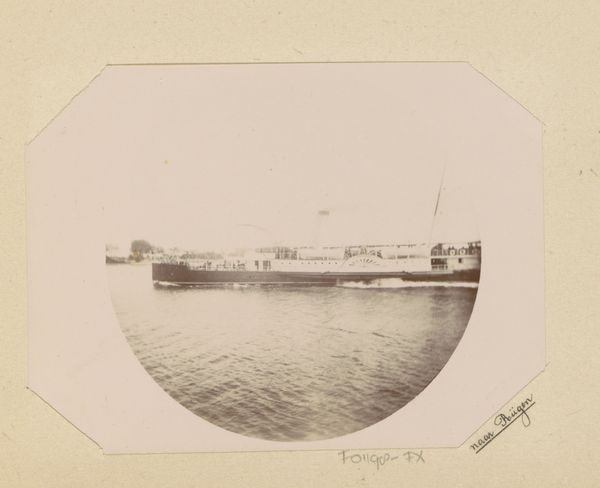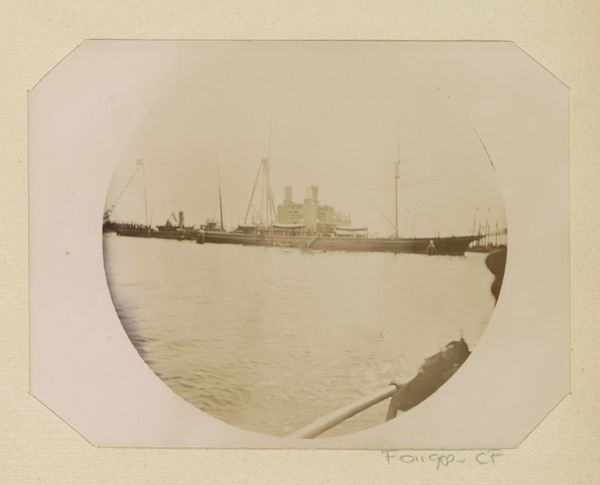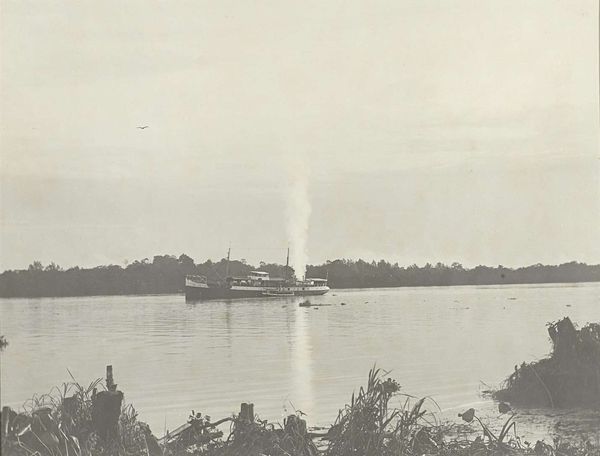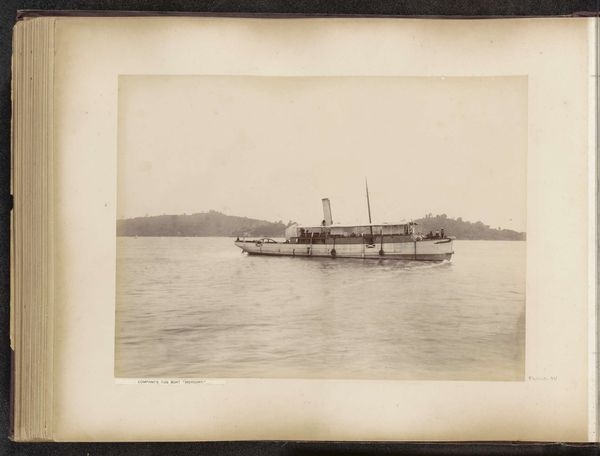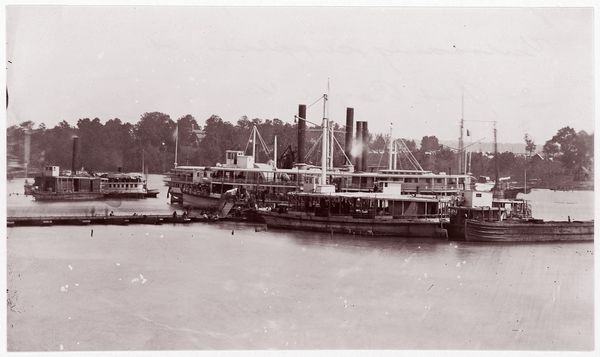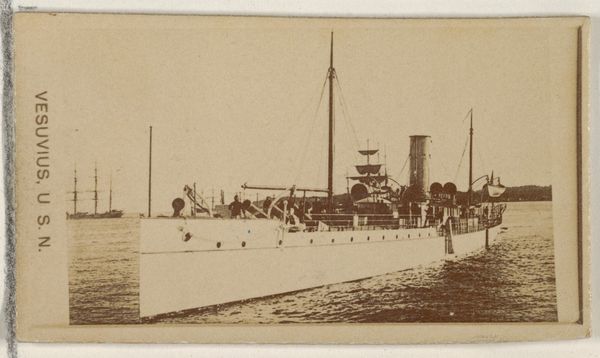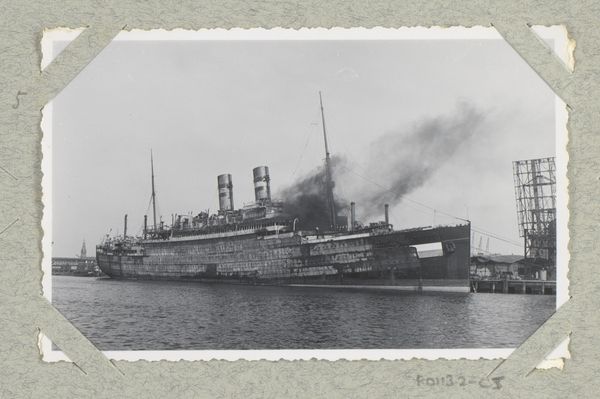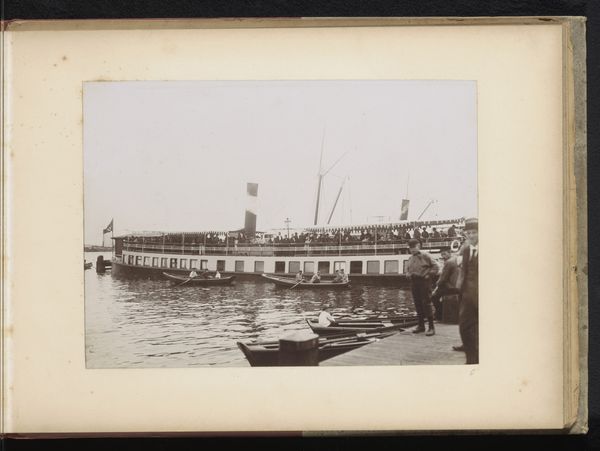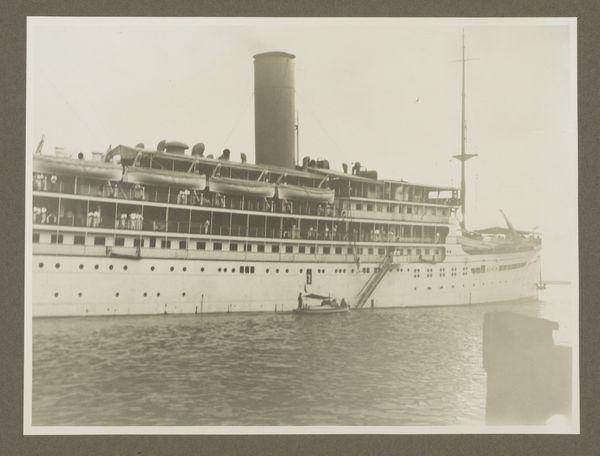
#
water colours
#
pastel soft colours
#
possibly oil pastel
#
fading type
#
coloured pencil
#
underpainting
#
watercolour bleed
#
watercolour illustration
#
mixed medium
#
watercolor
Dimensions: height 125 mm, width 168 mm
Copyright: Rijks Museum: Open Domain
Editor: Here we have Hendrik Doijer’s "Bacovenboot," created sometime between 1903 and 1910, it appears to be mixed media, likely watercolour and coloured pencil. The pastel shades create a faded, almost dreamlike quality. What formal elements strike you in this work? Curator: The immediate compositional arrangement presents a stark horizontal division. The linear form of the ship is strongly emphasized. Observe how the delicate lines defining the ship's structure and the texture of the water create a contrast with the relative blankness of the sky, do you notice this as well? Editor: Yes, I see it. It's quite subtle, isn't it? The ship seems almost suspended in the composition, but the waterline keeps it grounded. Are those choices important to the composition? Curator: Precisely. The artist seems focused on the interplay between form and emptiness. Notice how the vertical masts interrupt the dominant horizontality, providing a counter-rhythm within the structure. One could argue the subdued colour palette is a key formal decision, softening the whole work, while adding a feeling of timelessness. Editor: That’s interesting. It’s more than just a ship portrait; the colours and lines work together to create that sense of time passing. Curator: Exactly! By attending to formal elements, one finds deeper layers of meaning than immediately apparent. We move past what it depicts to what the components create through interaction. Editor: I agree, examining those key decisions illuminates the entire work. Thank you! Curator: Indeed. I hope this experience has widened your critical awareness and has offered a tool for appreciating the more tangible elements in the work before us.
Comments
No comments
Be the first to comment and join the conversation on the ultimate creative platform.

